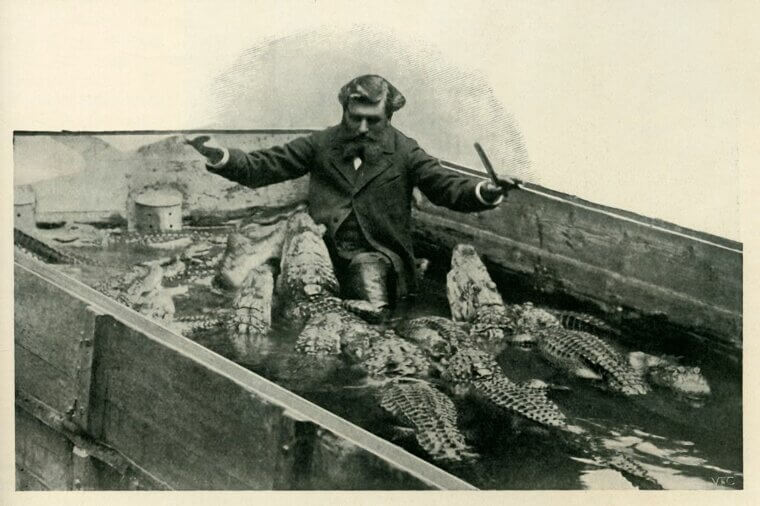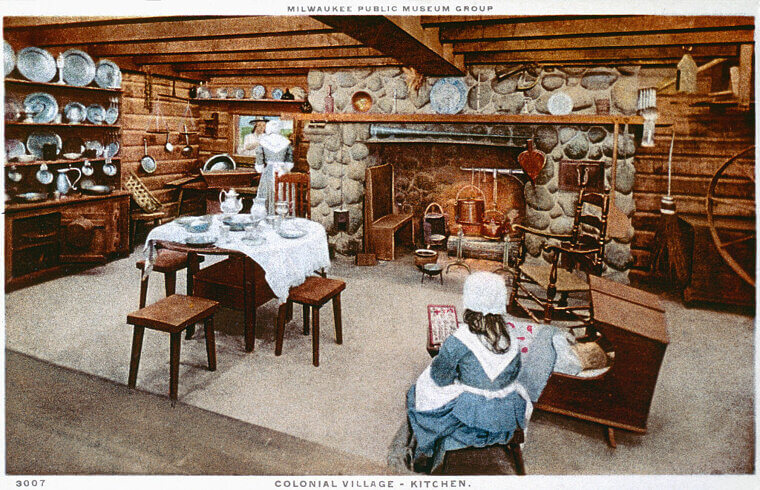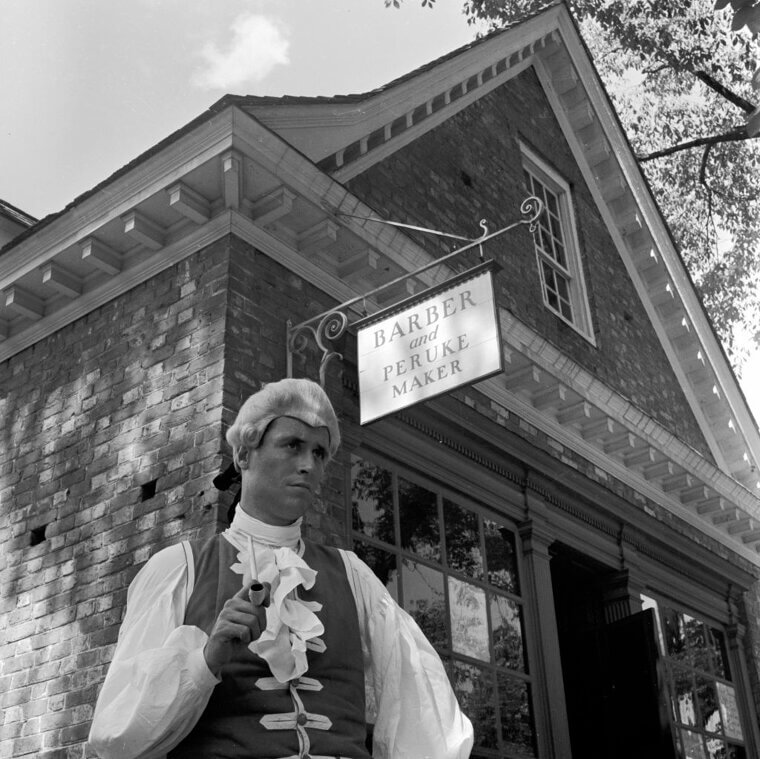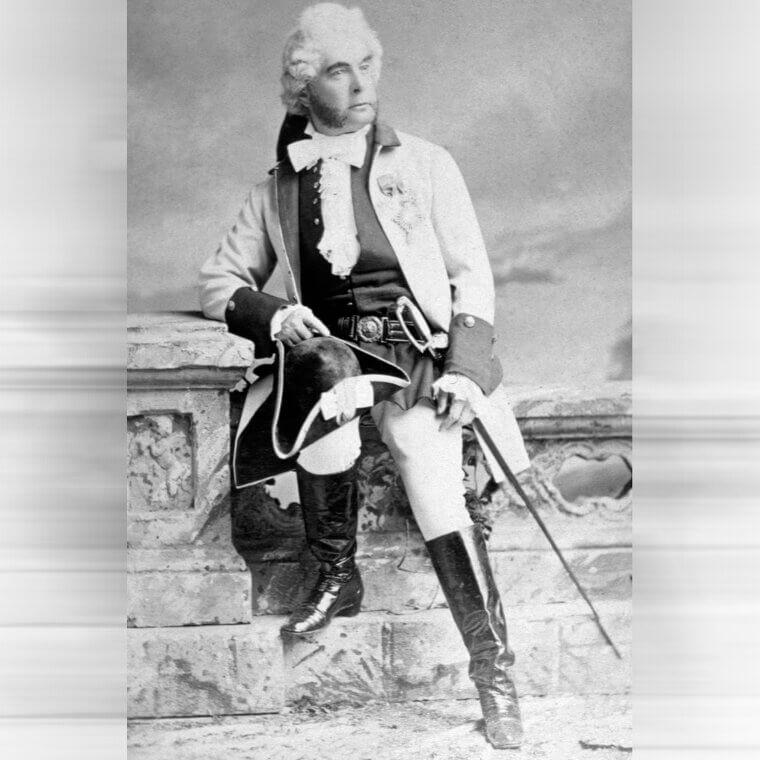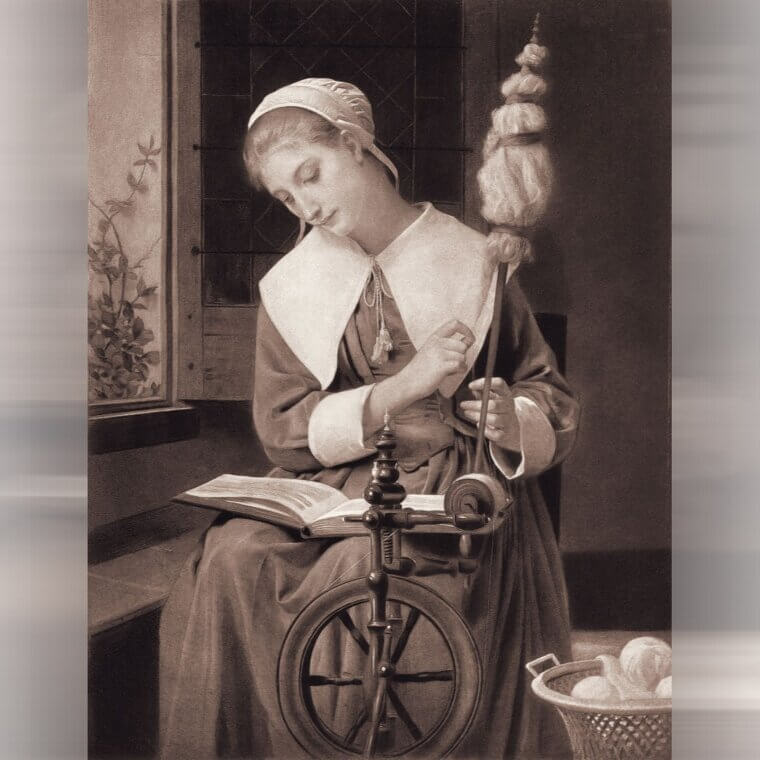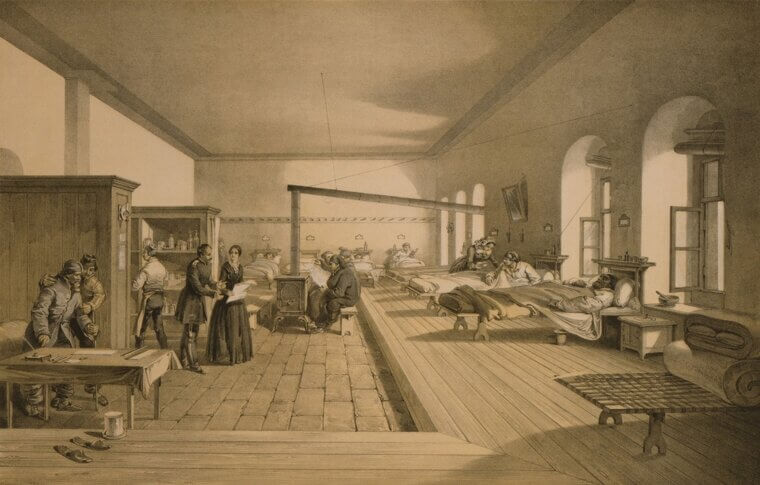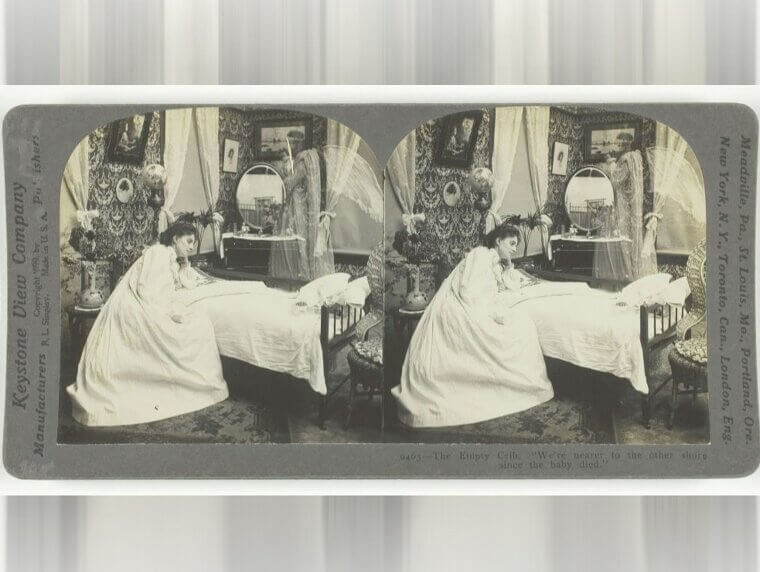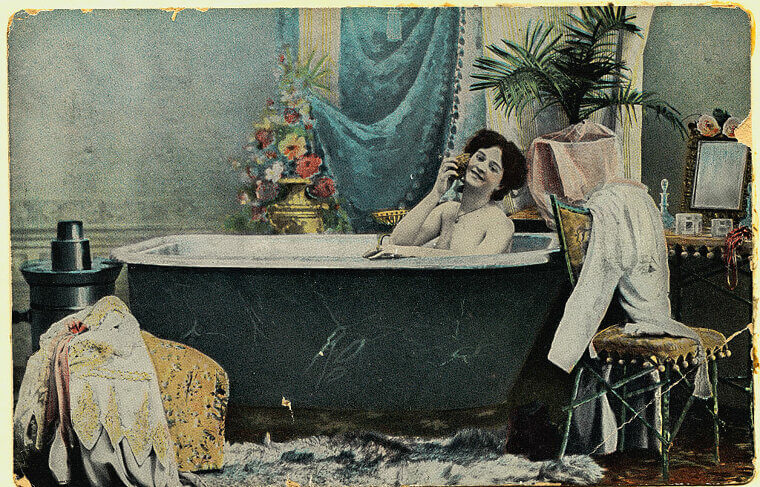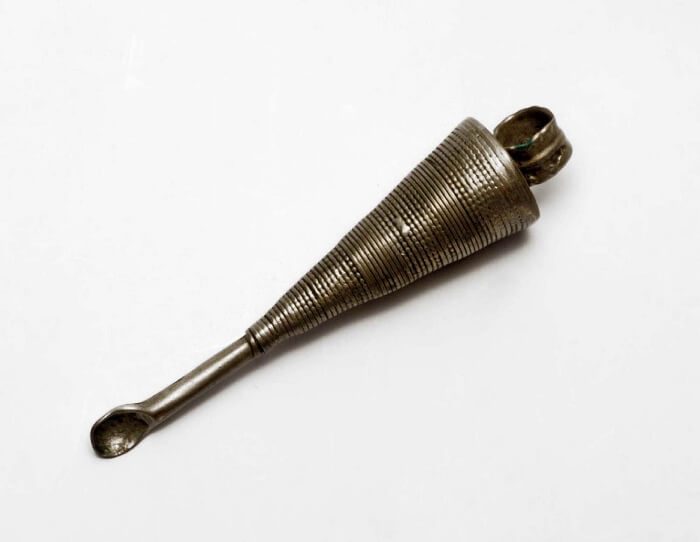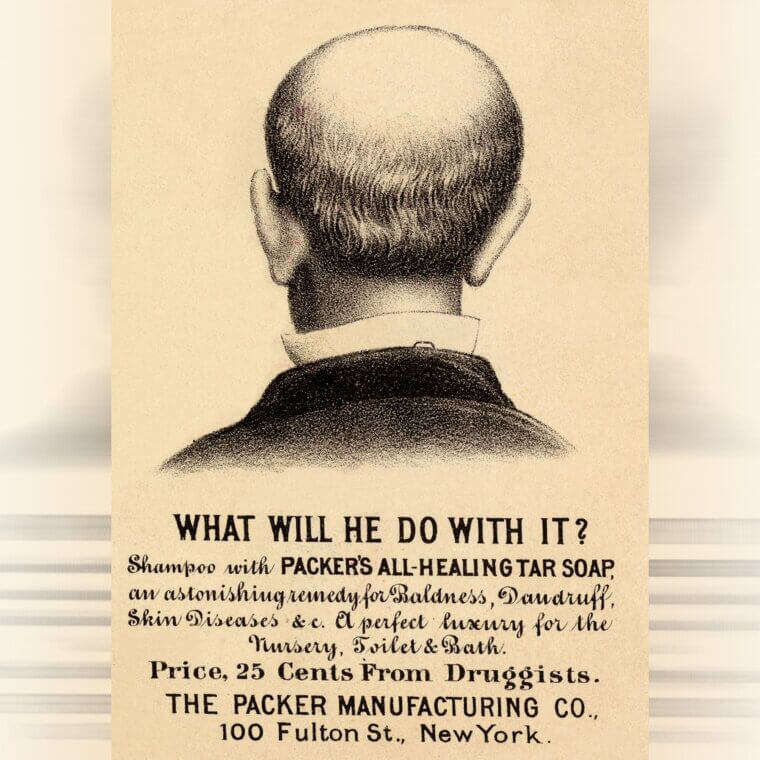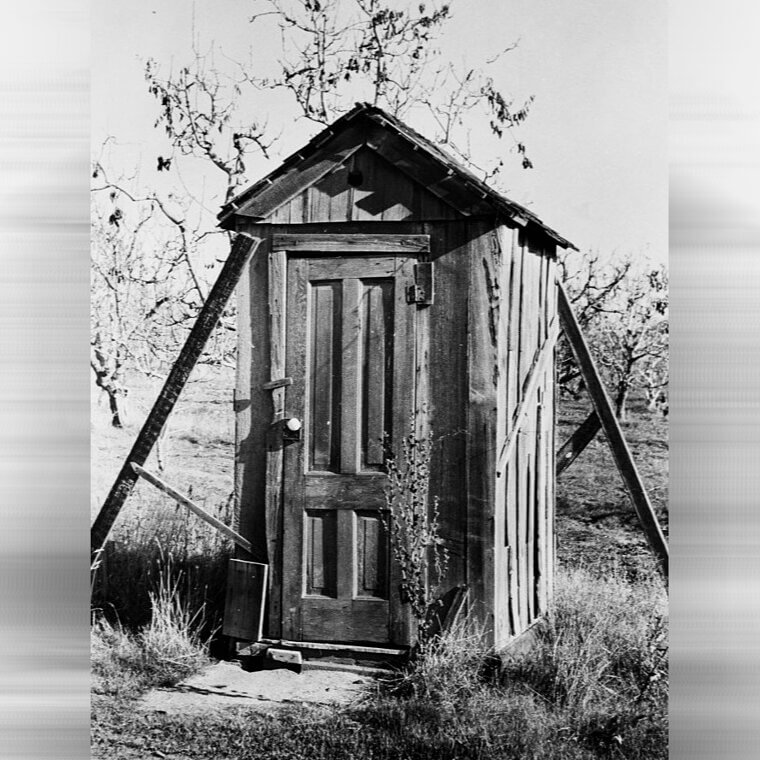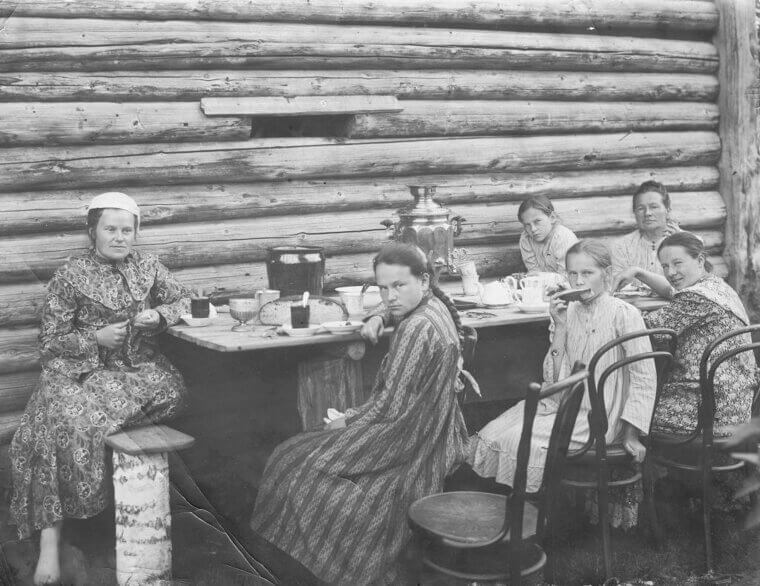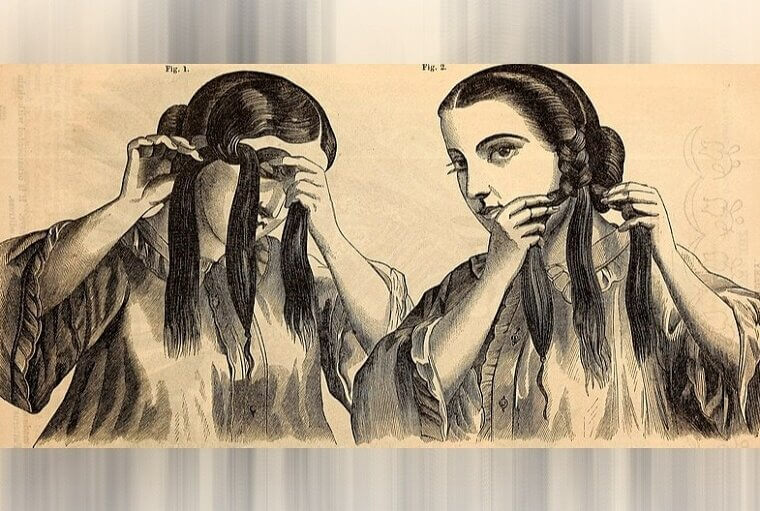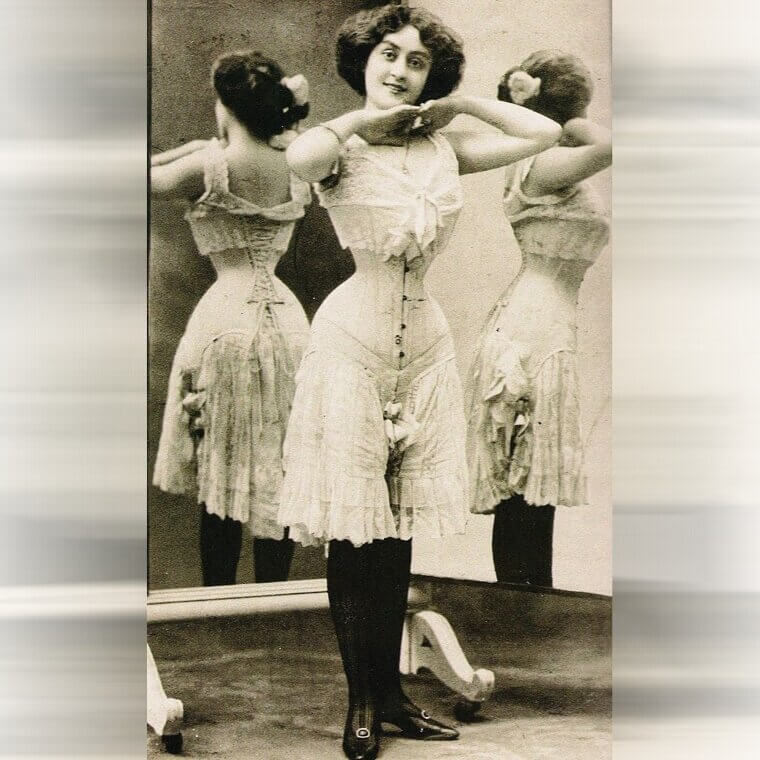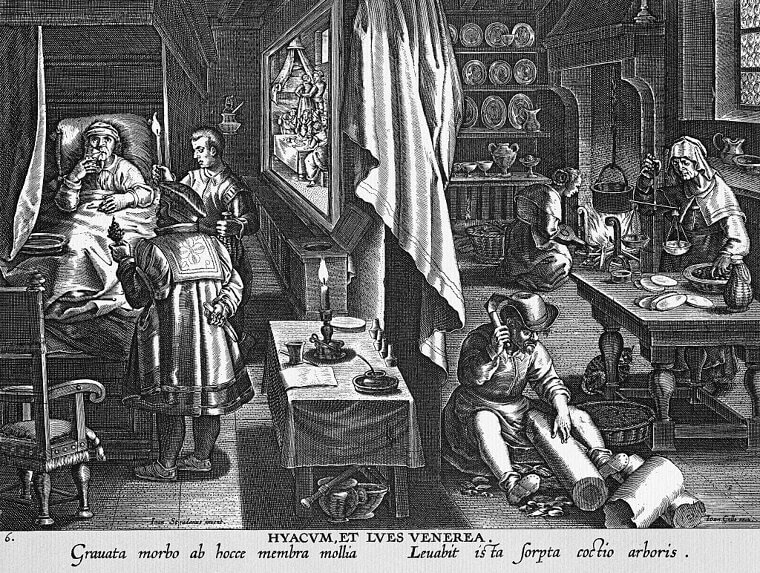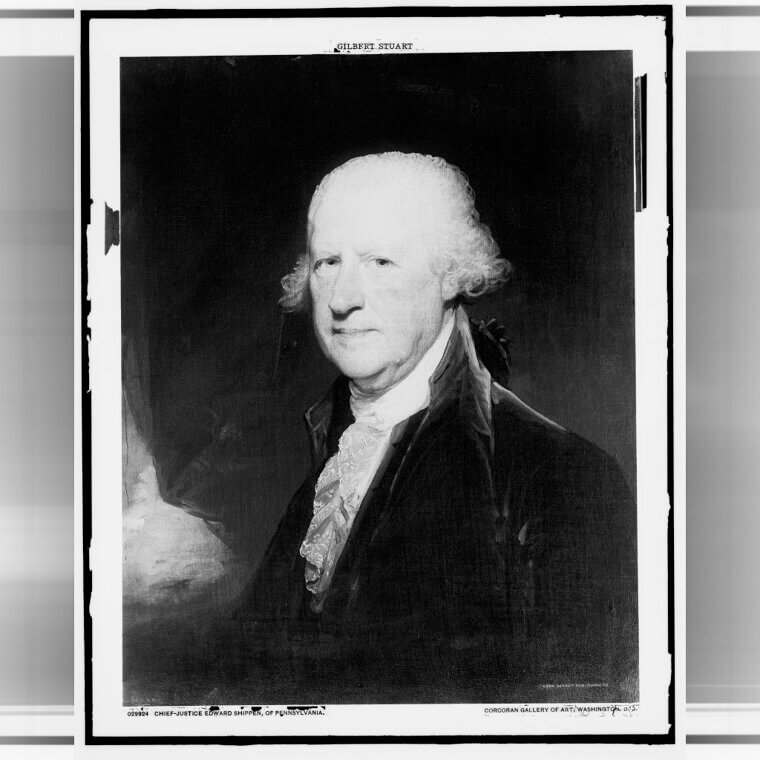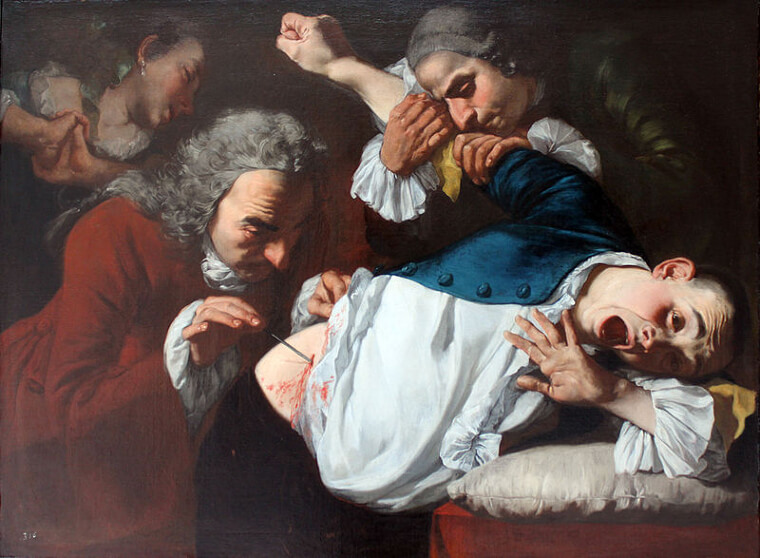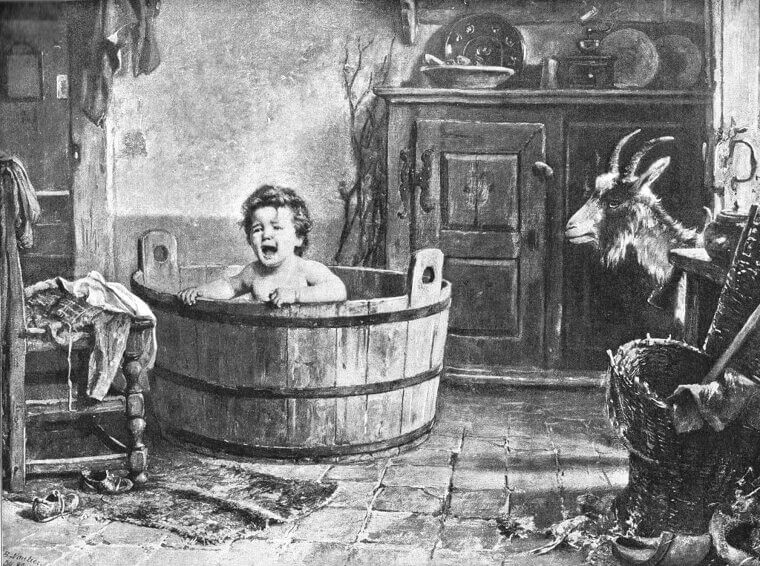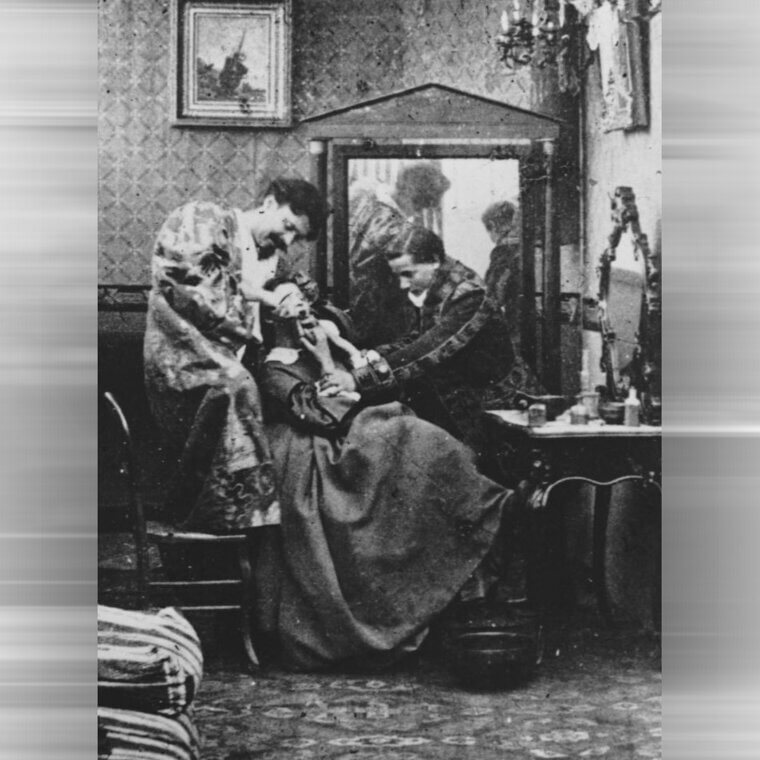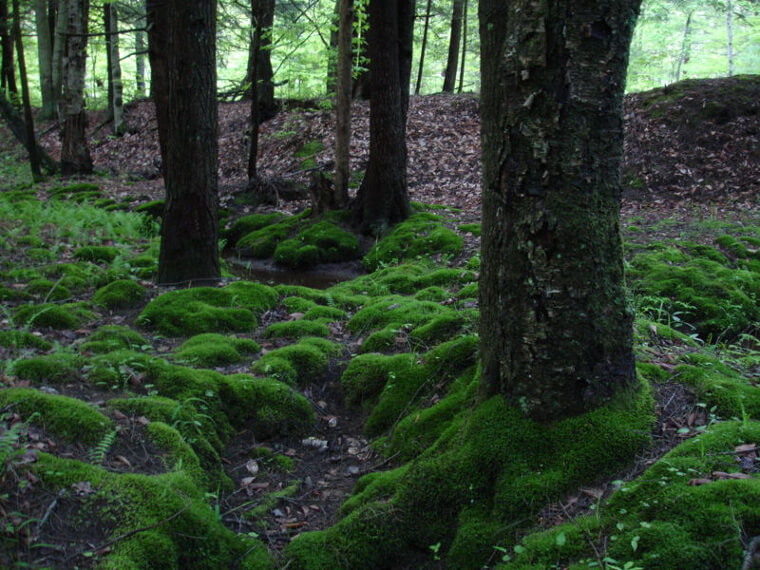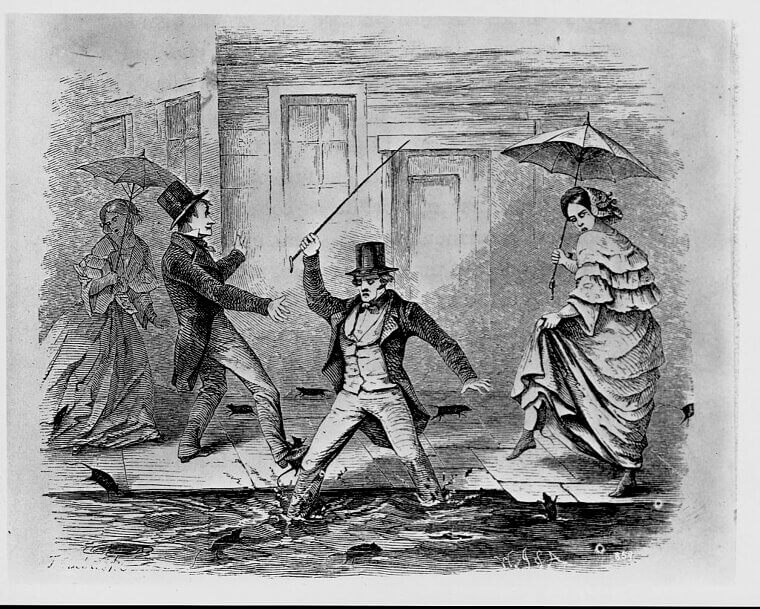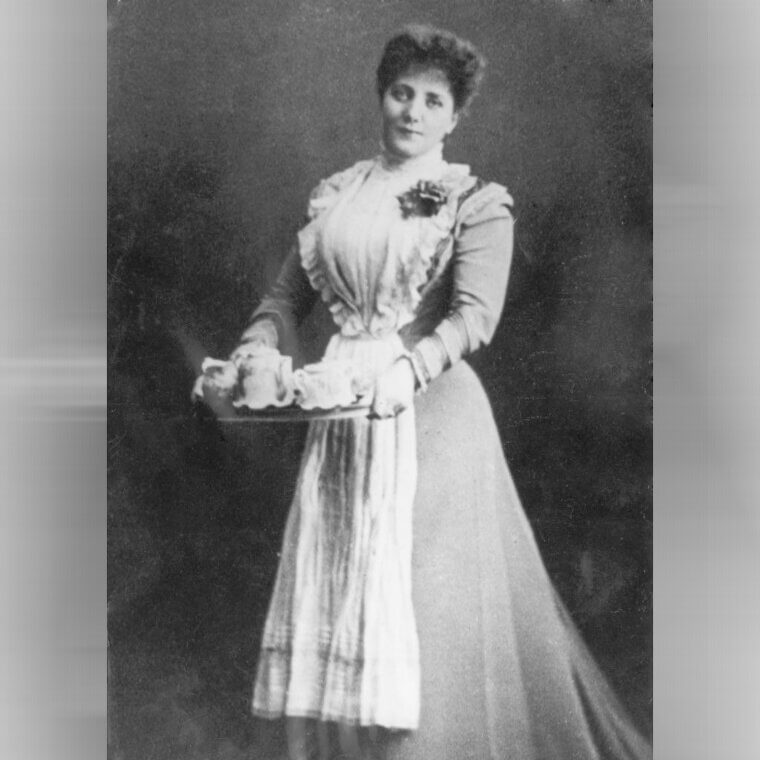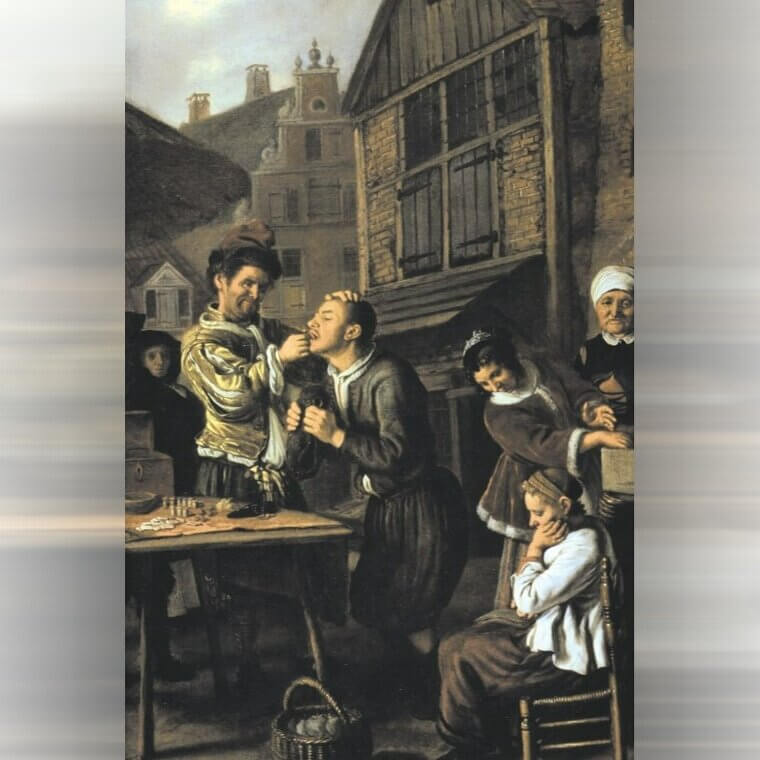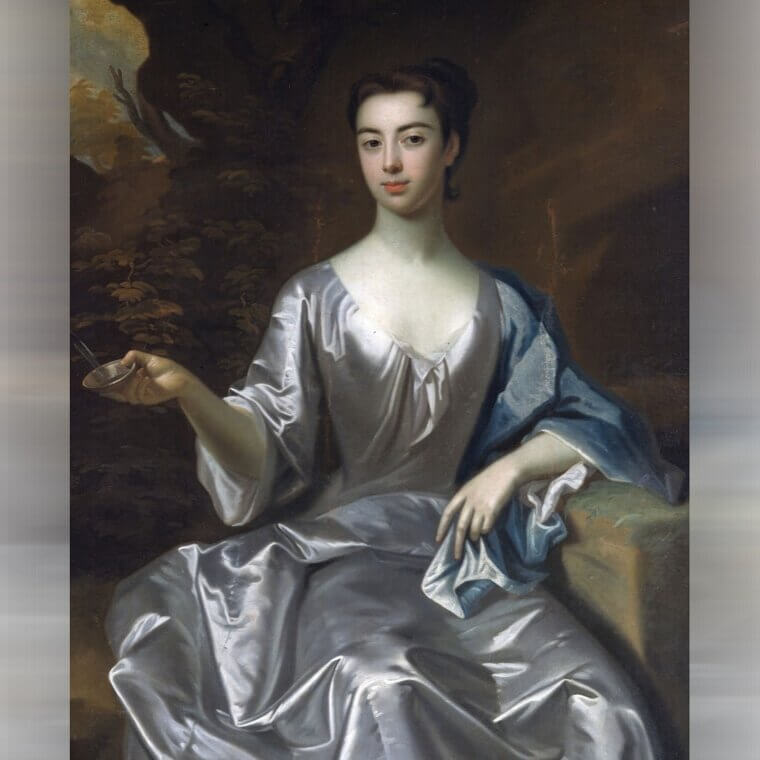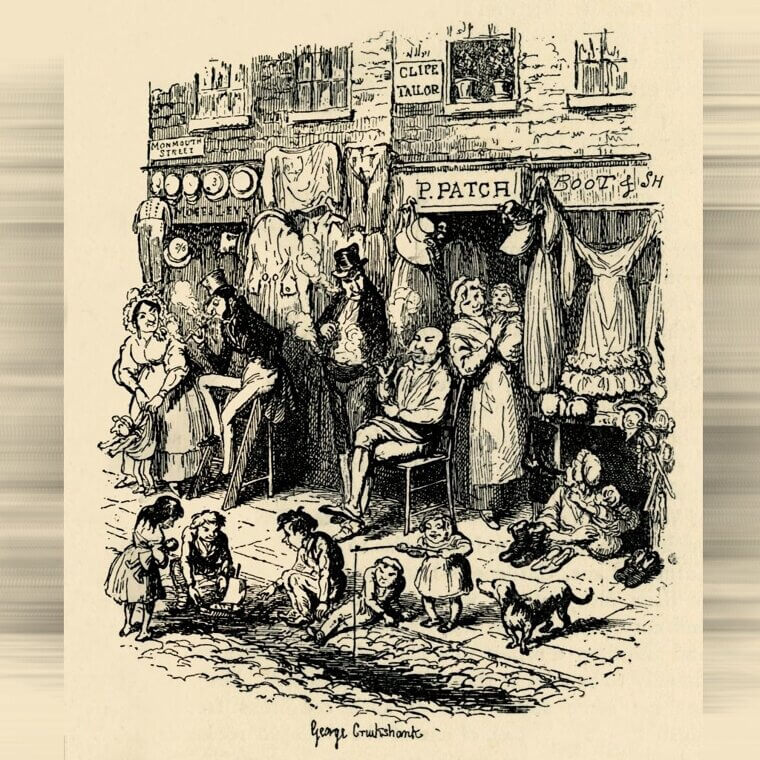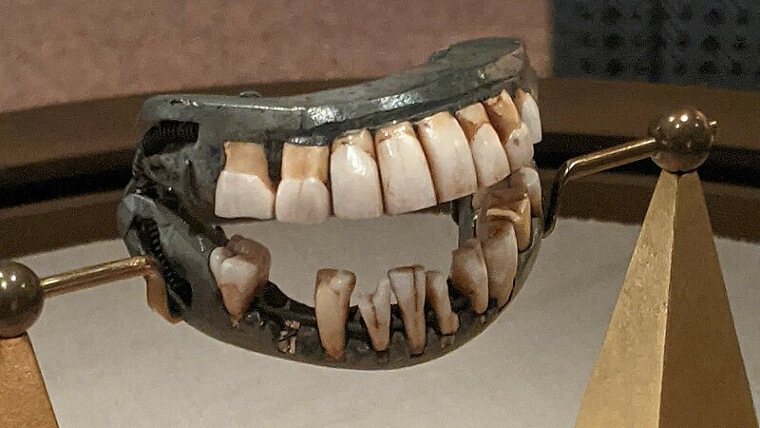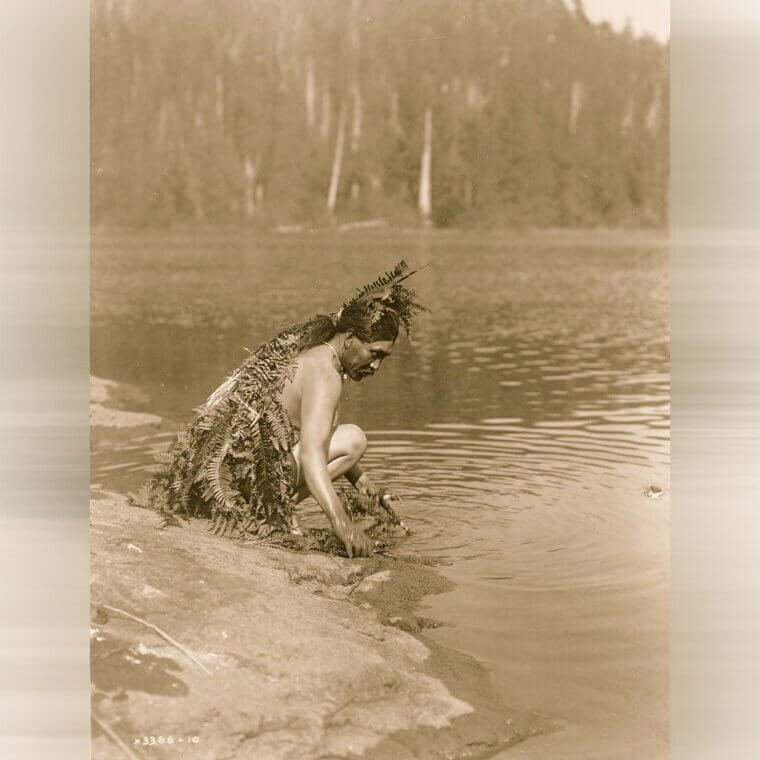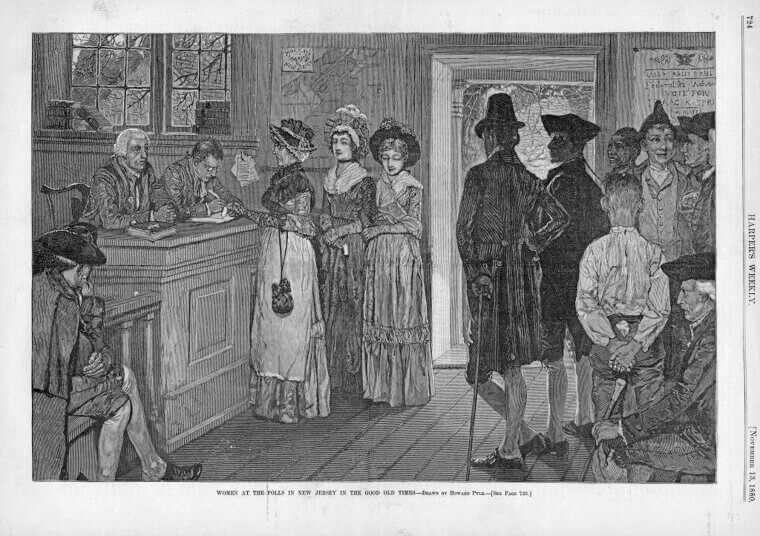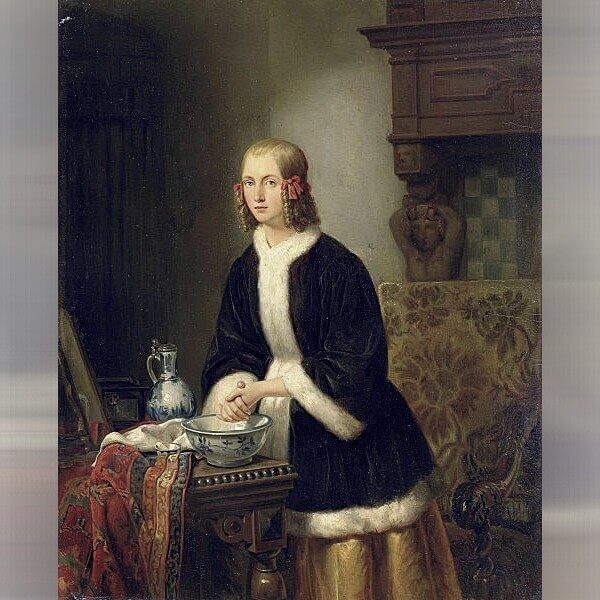Rotting Teeth Were Seen as a Sign of Wealth
During the Colonial era, sugar was a hot commodity. It wasn't something that the average Joe could buy, which meant that it was reserved for the higher, wealthier classes. And while we now know that rotten teeth as a result of too much sugar is a bad thing, they didn't think the same back in the day. Rotting teeth were actually seen as a sign of wealth, as it proved to the rest of the world that you could afford it.
Even those who couldn't afford sugar tried to fake that their teeth were rotting. They tried to stain them with natural colorings, and scrubbed them with lye to create the illusion that they were rich.
They Used Crocodile Excrement as a Contraceptive
During the Colonial era, contraceptives were scarce. Because of this, couples and unmarried women often welcomed children they had not been expecting or planning to conceive. But in an effort to prevent pregnancy, strange and bizarre makeshift contraceptives started to pop out of the woodwork. One of the most common during this time was crocodile excrement, which was rolled into a ball and then inserted into the woman before any physical acts.
As you can imagine, this caused a whole load of other problems and didn't always prevent pregnancy. So, the concept became less and less popular as the time wore on.
Dishes Were Washed With Animal Fat and Ash
Back in the Colonial era, they didn't have dish soap or laundry detergent on tap. Instead, the regular folk had to save up their hard-earned money for months to buy some laundry detergent. This was called lye soup, a strange concoction made from animal fat, ash from the fire, and lye. However, this lye soup was so expensive that the common folk didn't want to use it on all of their dishes and all of their laundry.
So, while they used it to wash their dirtiest washing dishes and the dishes that needed a good cleaning, others just didn't make the cut. In those instances, they were given a quick rinse in a bucket of water before being used again.
Only Men Were Allowed to Shave
Before the late 18th century, men tended to grow their beards and rarely focused their attention on shaving. If they did shave, they chose to do it at home. But that all changed when barbers started offering their services, and more and more men chose to attend these barbershops to shape up their beards and trim their mustaches. However, only men were allowed to shave in these barbershops, as the services weren't offered to women.
Instead, women would try to shave their body hair in private, which often resulted in bloody incidents and accidents. And as hygiene during the Colonial era was poor, these open wounds often became infected.
Men Wore Wigs to Prevent Lice Infestations
When you look back at photos from the Colonial era, you'll likely come across photos of well-to-do generals, presidents, and upper-class men wearing white wigs complete with ringlets and pigtails. And while these wigs were a sign of aristocracy, they also held a lot of secrets. That's because lice infestations were so common during this era that many men either lost their hair or shaved it off to prevent lice from setting up shop on their heads.
But while these wigs certainly covered their bald heads, they didn't stop the lice entirely. The critters were also attracted to the wigs due to the fact that they were often made from animal fur and hair.
Women Had to Pluck the Hair From Their Bodies
During the Colonial era, men shaved and women weren't allowed. And while some women simply embraced the extra hair on their bodies, others wanted to get rid of it. However, doing so required a high pain threshold. That's because colonial women had one of two options; they could either pluck each individual hair from their body, or they could make their own depilatory hair removal cream to help them out.
This cream wasn't like the safe products we have on the market today, though. It was actually made from a mixture of arsenic and limestone, which was not only painful but also very dangerous.
Huge Families Had to Bathe in the Same Water
Many of us take baths for granted today, but bathing was a huge ordeal back in the Colonial era. They didn't bathe regularly - perhaps once a month at most - as doing so was too difficult and time-consuming. After all, they had to pull their own water from the closest well, walk it back to their home, and then heat it up before pouring it into their wooden bathtubs. Because of this, they needed to savour every drop of the water.
As a result, huge families would share the same bath water when it was time to bathe. As soon as one person had their turn in the bath, they got out and another member of the family had their turn.
Colonials Covered Themselves in Snails to Cure Coughs
Coughs are all part and parcel of everyday life, and people still develop coughs every single day in the modern era. But while we have cough drops and even antibiotics, doctors relied on different medicines during the Colonial era. In fact, they swore by using a mixture of sugar and live snails, which the patient had to eat. Not only that, but they also had to cover themselves in snails to make the most of the slime.
Doctors believed that the snail slime would help to coat their throats and ease their cough, but they ultimately had no proof that it worked. So, it wasn't long before that type of medicine was shelved.
Women Wore Specific Toilet Clothes to Use the Bathroom
During the Colonial era, upper-class women wore large gowns that hid underskirts, bustles, and hoops that formed many heavy layers. However, there was no way that they could take these off every time they wanted to use the bathroom - which is why they had to wear specific toilet clothes instead. In most cases, women wore underwear that had an opening in the crotch, which allowed them to use the bathroom without taking off their clothes.
These proved to be extremely challenging to use, though, and women still had to hoist up their heavy skirts and dresses to use the opening. Because of this, using the bathroom was very messy business.
Disease Spread Like Wildlife During the Colonial Era
There's a reason why modern-day life is filled with so many health and safety rules and regulations - especially in regards to hygiene. The Colonial era is proof that poor hygiene can result in deadly diseases that can spread like wildlife, and that's exactly what happened during this period of history. Hospitals were full of adults and children alike all suffering symptoms of typhoid, cholera, and dysentery, and a huge number of those people couldn't survive the ordeal.
In fact, it's widely known that almost two-thirds of the men in George Washington's army were killed as a result of these deadly diseases. Once these diseases made their way into a home or army battalion, it was hard to get rid of.
Bed Linens Had to Be Kept to a Moral Standard
Although a small portion of those during the Colonial era bathed as much as they should have done, the Puritans believed cleanliness to be of huge importance during the 1600s. They did everything they could to clean their bodies and to clean their clothes, but that wasn't all that they wanted to be clean. They also believed that their bed linens had to be kept to a high moral standard.
As well as cleaning their bed linen regularly, they refused to go to bed with clothes on. They didn't want their clothes to contaminate the purity of their sheets, so they had to sleep in the nude.
Women Typically Washed Their Hair Once a Month
How many times a week do you wash your hair? Once? Twice? Three times? Whatever the case, there's a high chance that you washed your hair more than women who lived during the Colonial era. That's because women were encouraged to wash their hair as rarely as possible to abide by religious thought and to make their hair look and feel longer and healthier. Because of this, most women only washed their hair once a month.
The aim was to keep their hair free from any products or oils that would affect the health of their locks, and this makes sense considering their hair product of choice was lye - which we know now to be sodium hydroxide.
This Painful-Looking Tool Was a Tooth and Ear Cleaner
If you want to clean your teeth, you use a toothbrush. And if you want to clean your ears, you probably use Q-tips. During the Colonial era, however, they would use a special tool like this silver earpick. And while these tools were often forged with intricate patterns and designs, the reality is that these tools were used for the dirtiest of tasks. In fact, the spoon-like was used to quite literally scoop earwax out of the ear canal.
The other spiky end was used as a pick to scratch and clean the teeth and underneath the fingernails of colonials. So, let's just hope that it was cleaned in between uses.
Native Americans Used Natural Methods to Clean Their Teeth
As Native Americans and Europeans attempted to live side-by-side during the Colonial era, it was clear to see that they were very different - especially in terms of their hygiene. While Europeans damaged their teeth beyond repair by drinking a huge amount of sugar in their tea, Native Americans took their oral hygiene very seriously. They even used various natural methods to regularly clean their teeth and keep on top of their oral hygiene.
From using a chewing stick to chewing fresh herbs, they found many ways to clean their teeth. They also rubbed charcoal onto their teeth - something that we have adopted in the modern era in the form of charcoal toothpaste.
Male Baldness Was Treated With Chicken Excrement
Baldness is something that affects countless men, and it has done over the course of history. But while men in today's modern age can utilize hair transplants and even hair tattoos, this wasn't the case back in the Colonial era. During this time, they made the most of different, more traditional methods to treat baldness. One of the most popular was to smear chicken excrement all over a man's head in an effort to stimulate the growth of the hair.
Despite the chicken excrement showing no signs of improvement, men continued this practice for decades until they finally realized that chicken poop wasn't the answer that they were looking for.
Colonials Went to the Bathroom in Overflowing Outhouses
In today's day and age, we have running water, plumbed-in toilets, and waste pipes, which means we don't have to pay too much attention to our bathroom habits. Back in the Colonial era, however, they didn't have any of that. Instead, they had to go to the bathroom in outhouses - and within that outhouse was a privy pot for them to sit on. These filled up pretty quickly, though, and before too long they had to empty them.
With nowhere else to turn, colonials opted to empty their pots in nearby rivers, lakes, and other bodies of water that also served as their water sources. This ultimately lead to the spread of disease and even death.
European Settlers Spread Diseases That Killed the Natives
Being exposed to new viruses and diseases can be deadly, as the body hasn't learned how to defend itself from them. And when European settlers made their way to New England during the Colonial era, they also took strange and unknown European diseases with them - and the Native Americans had never been exposed to such germs before. As a result, over 90% of Natives were killed when these diseases started to spread.
Of course, their poor hygiene and lack of sanitation made the situation even worse, and it wasn't long before people were dying left, right, and center. And the numbers continued to drop for decades.
Colonials Often Wore Clothes While Bathing
If you heard that someone was having a bath in their clothes, you'd raise your eyebrows. During the colonial period, however, this was the norm. Colonials often wore clothes while bathing, as they were of the opinion that exposing the skin to huge amounts of water would actually cause you to drown from the inside out. As a result, they would only bathe for short periods of time and would cover their skin with clothes.
This practice was hugely popular during the early 18th century, but thought around this concept began to change a few decades later when the Enlightenment scholars discovered the health benefits of water on the skin.
They Thought Underwear Absorbed Impurities
Underwear has been around for centuries, and it's just as important today as it was back in the Colonial era. But while we now know the importance of cleaning and washing underwear after each use, they thought differently during colonial times. They actually thought that your underwear absorbed the impurities in the body, so they would wear the same underwear for weeks on end before washing them. Not only that, but they also made sure to have their underwear on show.
Both men and women made sure that the hems of their underwear peaked through their outfits, to show the outside world that they were morally pure and taking steps to absorb their impurities.
The Native Americans Tried to Persuade the Colonials to Bathe
When the Native Americans were introduced to the colonial settlers, they tried to survive peacefully alongside each other. And while the settlers believed themselves to be far superior to the natives, there's no doubt about the fact that the natives had one up on the colonials. After all, they had strong and effective hygiene habits while the settlers didn't. Because of this, the natives tried to persuade the colonials to bathe and improve their hygiene as a whole.
The colonials didn't listen, though, and continued to live very unsanitary lifestyles that resulted in the spread of disease. Still, experts all agree that changing their ways would have spared many unnecessary deaths.
The Spaniards Were to Blame for the Spread of Syphilis
When the Spaniards made their way to the United States in the 1400s, they aimed to make their mark on the New World. However, what the natives didn't anticipate was for the Spaniards to also make their mark by spreading syphilis throughout the country. Before too long, everyone knew someone affected by syphilis, which was spread even further by poor hygiene and a lack of sanitation. As it was a relatively new disease, doctors didn't know how to treat it, either.
Because of this, syphilis continued to plague the world for decades. At one point, it was the fourth leading cause of death in the world - until World War II pushed it down the list.
The Europeans Had Awful Oral Hygiene
Even today, a common stereotype is that Europeans have bad teeth. And while modern dental practices mean that this is just a common misconception, it's not hard to understand where this thought first came from. After all, during the Colonial era the Europeans had awful oral hygiene to the point where their teeth were stained beyond the point of repair, they were completely corroded, and many simply fell out as a result.
This was a far cry from the Native Americans who lived alongside the Europeans during this era. They took a huge amount of pride in their cleanliness and their hygiene - including their oral hygiene.
Poor Hygiene Ultimately Led to Medical Advancements
The Colonial era was rife with diseases, infections, viruses, and vermin that made it almost impossible for patients to survive their diagnoses. Hospitals were overstretched, doctors were struggling to deal with new and mutated strains of these diseases, and the conditions were extremely poor. And while this was certainly an issue for those looking to fight back against their illnesses, this did serve an important purpose for the medical professionals who worked during this time.
With all of this new information and experience in their back pocket, the greatest minds in medicine were able to learn from what was happening and bring about change through impressive medical advancements.
Babies Were Bathed to "Harden" Them for Colonial Life
Although colonial men and women rarely took the time to bathe themselves, they always made the time to bathe their babies and their children. However, it might surprise you to learn that they didn't believe in bathing their children to clean them. They instead bathed their children to "harden" them against society and fight back against the many diseases and viruses there were in the world. In fact, they believed that a bath was like an immunization.
Because of this, they would often sacrifice their own bathing time to bathe their children in an effort to keep them healthy. Of course, we now know that it doesn't work like that.
Barbers and Blacksmiths Used to Pull Teeth
Oral hygiene during the Colonial era was abysmal, and when their teeth didn't rot away and fall out of their own accord, colonials had to get them removed. But with no dentists or oral surgeons to help them, they didn't go to a specialist oral expert. Instead, they relied upon those who had the tools for the job - including barbers, blacksmiths, and even apothecary workers. They were very busy during this time, too.
While many of these workers simply pulled teeth without any pain medication, others offered natural pain remedies such as figs, alcohol, and even opium to make the process easier on their patients.
Women Used and Ingested Chalk on a Regular Basis
Beauty standards have changed throughout history, and during the 18th century, a woman's worth and wealth were based on the color of her skin. In fact, the whiter she was, the more beautiful she was considered. And while many women were naturally white, they decided to take matters into their own hands to make their skin look even more pale. For this, they used to paint their faces in white chalk.
Many women took this process one step further and started eating the chalk, too. And while this did indeed make them look paler, this was largely due to the fact that it made them incredibly ill.
Women Made Sanitary Pads Out of Moss
While many women around the world are living in period poverty, we also live in a world where period products are becoming readily available - and both easy and safe to use. Women can choose from either sanitary pads, tampons, or even period underwear, which wasn't the case back in the Colonial era. Instead, women had to try and make their own makeshift pads using whatever they could find near their homes.
For many who lived near trees and forests, this was moss. And while the moss was fairly absorbant, using such an item also resulted in countless infections and illnesses from the bacteria and germs in the moss.
Vermin Ruled the Streets and Invaded Houses
Hygiene practices during the Colonial era were poor, but what made the situation even worse was the fact that these people lived amongst vermin and pests throughout the entirety of their lives. They were surrounded by cockroaches, lice, mosquitoes, rats, flies, and more - and these critters all carried diseases and germs of their own. This didn't go down well with European settlers, who struggled to get rid of these pests.
As well as spreading diseases, this vermin also left the Europeans with stings, rashes, bites, and more. As they scratched these bites and rashes, they opened up wounds that were exposed to even more germs.
Colonials Made Their Own Perfumes to Mask Their Scent
Nowadays, you don't have to look too far to find beautifully scented perfumes. And with thousands of ready-made options to choose from, it's fair to say that we're spoilt for choice. Back in the day, however, perfumes didn't exist in the way that they do now. Instead, colonials had to make their own DIY perfumes using everyday products they had lying around the house. For women, this was a cheap scented powder - almost like the deodorant we wear today.
Men chose something a little different, though. For the most part they opted for a mixture of rum and spices that they then dabbed under their armpits, around their neck, and on their arms.
Colonials Used Canadian Tea as a Contraceptive
Today, there are many different contraceptive options out there, but the options weren't quite as impressive during the Colonial era. Women often had to turn to strange and bizarre means to prevent unwanted pregnancies, and one of them was Canadian tea. Of course, you might be wondering what's wrong with a cup of tea. Well, Canadian tea wasn't made from delicious tea leaves in a variety of flavors. Canadian tea was actually made from the genitals of beavers.
To be more specific, it was made from the genitals of male beavers, which were then brewed up and drunk by women as a natural contraceptive. There's no evidence to suggest that it actually worked, though.
Colonials Didn't Have Toothbrushes, so Had to Improvize
Most people wouldn't know what to do without their toothbrush today, as our oral hygiene largely relies on this one specific product. But colonials had to make do with what they had around them, as toothbrushes just didn't exist at that point. So, those who wanted to clean their teeth (typically those in the lower classes and those who didn't eat sugar) used natural methods instead. One of the most popular was simply rinsing your mouth with water after eating.
Another method was chewing a herbal stick and wiping it over the teeth to remove any remaining food and freshen the breath. Thankfully, the toothbrush was eventually invented in the mid-18th century.
Women Were Discouraged From Washing Themselves
Everyone knows that the less you wash, the more you stink. And while most people in today's day and age try to avoid smelling at all costs, this wasn't the case back in the Colonial era - especially for women. Although doctors encouraged women to bathe themselves regularly to protect their fertility and their overall health, wealthy men actively encouraged women to embrace their body odor and their lack of hygiene.
In a wealthy man's eyes, a female who smelled dirty was less appealing to other men who wanted to take them for their own. So, they tried to smell even worse to ward them off.
Rich People Tried to Cover up Their Poor Personal Hygiene
As water was so hard to come by and colonials rarely spent time worrying about their personal hygiene, both rich people and poor people largely took the same number of baths during the Colonial era. But what set them apart was the fact that rich people had money, allowing them to mask their poor personal hygiene with long robes, multiple layers of clothing, and strongly scented perfumes that overpowered those close to them.
On the other hand, poor people didn't have these luxuries. They just had to embrace their smell and deal with the fact that they would continue to smell until their next bath.
George Washington May Have Bought a Set of Teeth
George Washington was a huge figure during the Colonial era, and he was also incredibly rich. This meant that he could buy more sugar than anyone else - which caused his teeth to rot and fall out. And while the jury is still out on whether he did this or not, stories suggest that he actually bought himself another set of teeth. To be more precise, he paid six pounds and two shillings for a set of healthy teeth.
He wasn't alone in potentially doing this, either. As poorer people had better oral hygiene and rarely tasted sugar, many wealthy people wanted to buy their teeth from them. So, they did.
Bathhouses Were Rarely Used for Bathing
By the time the mid-18th century came around, the importance of cleanliness and personal hygiene was becoming more prevalent. Because of this, bathhouses started popping up around the richer neighborhoods. And while they were built to encourage bathing, they were rarely used for this task. Instead, they were a way for rich men to mingle, network, and relax after a long day of providing for their families and their continuing legacy.
Not only that but they were also used as a way to cool down after the intense heat. As a result, they were full most days and nights with well-to-do men.
Native Americans Took Pride in Their Hygiene Practices
While colonials rarely took the time or effort to wash themselves, the Native Americans thought differently. They believed that their body was a temple and that they needed to keep it clean to prevent illness and keep them in full health. Because of this, they always took time out of their day to wash in rivers, use leaves as makeshift washcloths, and do anything they could to scrub their body.
In fact, they didn't understand the colonials at all. They were especially disgusted when they realized that the colonials carried around handkerchiefs that were full of their phlegm and germs.
Wealthy People and Religious Leaders Were Conflicted on Hygiene
Perhaps one of the biggest concerns during the colonial era was that wealthy people and religious leaders didn't agree on personal hygiene. On the one hand, religious people didn't want to waste their time bathing or cleaning their teeth when they could drink sugary tea and shmooze with the upper classes. On the other hand, however, religious leaders believed that a lack of hygiene was a mortal sin and associated with the devil.
Because of this, many people found themselves in conflict with their hearts and their heads. Many rich people were also ousted by their former friends and family who followed the religious teachings, too.
George Washington's Soldiers Ignored His Commands
While George Washington was leading the charge during the Revolutionary War, he wanted his soldiers to be up to full health - which is why he pushed for them to be as clean as possible. But in a Colonial era where washing and cleaning weren't popular pastimes, many of them ignored his demands and perished as a result. When this happened, Washington knew that he had to call in the big guns.
These weren't weapons, though. They were actually groups of women who were tasked with cooking, cleaning, and assisting the soldiers in any way they could to keep them in top shape.
A Bucket of Water Was the Main Bath of Choice
If you want to have a wash, you have multiple options to choose from. You could opt for a full-body shower, you could choose to submerge yourself in the bath, or you could just wash your face with a wash cloth and some soap. The latter is not too dissimilar to how they would wash themselves during the Colonial era, but the main difference is that they didn't have a choice. They rarely had baths, so a bucket of water was the main bath of choice.
They would simply grab a dirty rag, dip in the water, and wash their whole body with it. As the water was often contaminated and they rarely had soap, these washes rarely did the trick.
Bathing Was Considered to Be Unhealthy
Today, we all understand the importance of water in our cleaning schedule. But during the Colonial era, they didn't think the same. They actually believed that taking off your clothes and submerging into a bath or bucket of water was not just unhealthy but also completely immodest at the same time. Because of this, many holy people refused to bathe, and Louis XIV supposedly only ever bathed three times over the course of his whole life.
They didn't avoid water entirely, though. These people would sometimes grab a bucket and use the water to wash their hands or their faces. Submersion was something they avoided at all costs, though.

